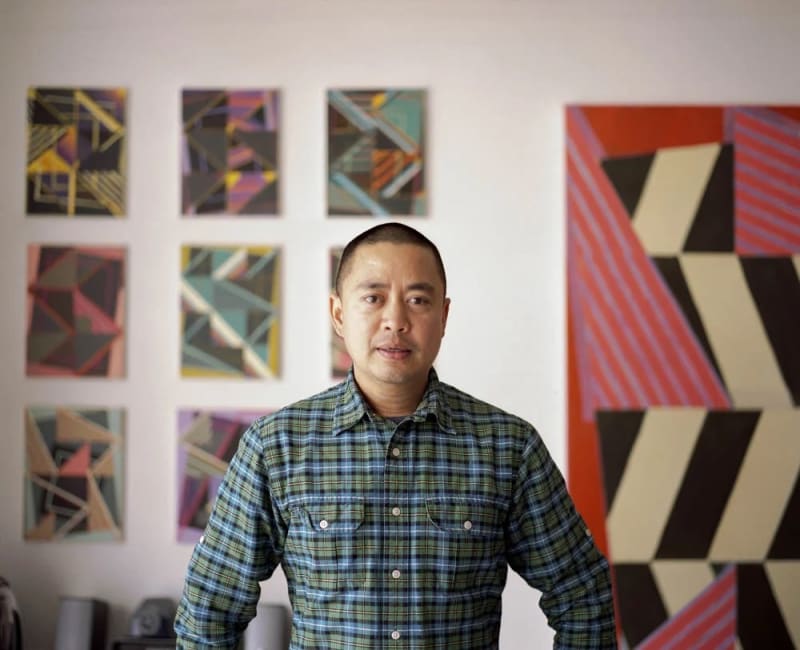Hi Paolo, thanks for talking with me. This is my inaugural interview so let's get this started!
Hi Eric, happy to be the first!
Can you tell us a bit about your background and what motivated you to become an artist? How has your work evolved over time up to this moment?
I was born in the Philippines and moved to the US when I was two years old. My father was in the US Navy so I grew up in Hawaii, Florida and Virginia. I received my BFA in Painting from Virginia Commonwealth University in Richmond. And I moved to NYC in the fall of 2000 immediately after a residency at The Skowhegan School of Painting and Sculpture. I’ve been living and working in Brooklyn for the past 18 years.
I started playing the piano at a very early age. In high school I attended the Governor’s Magnet School for the Arts in Norfolk, VA to study music. I was surrounded by other musicians, visual artists, dancers and performing artists. I went on to study Music Performance at Virginia Commonwealth University. I aspired to be a classical pianist, but after the first semester of my freshman year, I became curious about the visual arts.
Since graduating from VCU with a BFA, my work has evolved over the years. My work has gone from gridded abstractions in oil to representational and photorealistic graphite drawings on paper and then back to painting with acrylic. In recent months I’ve been working with acrylic paintings, sewn textiles and fabric collages.
What's your favorite medium for the preliminary planning stages of painting? Do you make drawings?
I make drawings in a small sketchbook. Sometimes my paintings are a conglomeration of parts taken from multiple sketchbook drawings. More recently my work has become more improvisatory and I let the paintings emerge and unfold during the process of making without too much planning.
Your work taps into a nostalgia for older recognizable art historical forms, which seems to be a prevalent approach for a lot of engaging painters these days. How does your appreciation for art and design history play into your formal decisions? I see some similarities between your painting and for or instance quilt design, how much of your inspiration doesn't strictly fall under the category of Fine Art?
My work is rooted in geometric abstraction. There’s a lineage of history that I’m both working with and against. I’m experimenting with ways to explore the elastic concept of queerness through abstraction – specifically geometric abstraction. And one of the questions I ask myself in the studio is “Can abstraction or geometry be gay?” Working with textiles feels like an appropriate material to help soften the geometry and “straight” system of the grid that I’ve been working with throughout the years. Quilts and textiles have been a rich reference source for me as well.
This is somewhat of an unpopular question, but have there been any fashionable approaches to painting from the last several years that bother you. I'm somewhat of a fanboy, but I like to keep my critical faculties sharp, so to speak. Feel free to plead the fifth here :)
I try not to get too bothered by or caught up with what’s fashionable. Taste in the art world is cyclical and eventually almost everything becomes fashionable at one point or another. I believe in what I’m doing and why I’m making the work I make.
Let's talk about your color usage—do you lay out your color schemes beforehand, and how strictly do you adhere to that in the process of painting?
Color is both personal and political. I sometimes pre-mix a few main colors and then create secondary or tertiary mixes as I go along. I admit that there are colors that I gravitate to more than others, but I like to mix things up by playing with colors that are intentionally ugly or jarring and placing them next to other colors to create a vibration or dissonance.
...
View the full interview at maakemagazine.com

